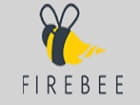ARLINGTON, Texas--(BUSINESS WIRE)--Six Flags Entertainment Corporation (NYSE: SIX), the world’s largest regional theme park company and the largest operator of waterparks in North America, today reported a decline in revenue and earnings, as anticipated, for fourth quarter and full year 2020 as compared to the same periods in 2019. Because of limited park operating schedules and capacity restrictions caused by the COVID-19 pandemic, total attendance for full year 2020 declined 79% compared to 2019. This loss of attendance was partially offset by higher guest spending per capita. The company continues to maintain a cautious and safety-first approach to operating its parks to ensure compliance with social distancing and other safety measures, in accordance with local health and government guidelines. In addition, the company continues to make progress implementing its transformation plan to modernize the guest experience and to reinvigorate long-term profit growth.
Attendance trends in 2020 continued to improve over the course of the year, increasing from 35% of prior year levels in the third quarter to 51% in the fourth quarter,1 for the parks that were open. Several of the company’s parks modified their operations by providing drive-through or walk-through experiences for the holiday season, and the company’s parks in Mexico were able to operate for a portion of the quarter. As a result, every park that was open in December 2019 was able to open in some capacity during December 2020.
“I am extremely proud of the way our team members responded in a challenging year. They found innovative ways to safely operate our parks and entertain millions of guests in the face of the pandemic,” said Mike Spanos, President and CEO. “Our focus is to open all of our parks for the 2021 season and be prepared to satisfy the pent-up demand we anticipate for outdoor entertainment close to home.”
“We continue to make progress on our transformation plan to modernize the guest experience and operate as a more efficient company, enabled by technology. I feel confident that we will see significant benefits beginning in 2021,” continued Spanos. “We expect the transformation to result in meaningful profit growth once our plan is fully executed and we are back in a more normal operating environment.”
Fourth Quarter 2020 Highlights
- Attendance was 2.2 million guests, a decline of 4.0 million guests from fourth quarter 2019. This represented 35% of prior year total attendance, and approximately 51% of prior year attendance at the parks that were open, relative to the comparable prior year period. A schedule of comparable operations for the fourth quarter is set forth in Schedule A of this release.
- Total Revenue was $109 million, a decline of $152 million from fourth quarter 2019.
- Net loss was $86 million, a decline of $75 million from fourth quarter 2019.
- Adjusted EBITDA2 was a loss of $39 million, including $19 million of litigation reserve increases, a decline of $111 million from fourth quarter 2019.
- Net cash outflow for the quarter was $56 million, an average of $19 million per month.
Full Year 2020 Highlights
- Attendance was 6.8 million guests, a decline of 26.0 million guests from full year 2019.
- Total Revenue was $357 million, a decline of $1,131 million from full year 2019.
- Net loss was $423 million, a decline of $602 million from full year 2019.
- Adjusted EBITDA was a loss of $231 million, a decline of $758 million from full year 2019.
- Net cash outflow for the year, excluding the net impact of financing raised, dividends paid, and pre-payment of debt, was $331 million, an average of $28 million per month.
Fourth Quarter 2020 Results
|
(In millions, except per share and per capita amounts) |
Three Months Ended |
||||||||
|
December 31, 2020 |
December 31, 2019 |
Percentage Change (%) |
|||||||
|
Total revenues |
$ |
109 |
$ |
261 |
(58) |
% |
|||
|
Net loss attributable to Six Flags Entertainment Corporation |
$ |
(86) |
$ |
(11) |
N/M |
||||
|
Loss per share, diluted |
$ |
(1.00) |
$ |
(0.13) |
N/M |
||||
|
Adjusted EBITDA |
$ |
(39) |
$ |
72 |
N/M |
||||
|
Attendance |
2.2 |
6.1 |
(65) |
% |
|||||
|
Total guest spending per capita |
$ |
47.00 |
$ |
40.22 |
17 |
% |
|||
|
Admissions spending per capita |
$ |
27.28 |
$ |
23.60 |
16 |
% |
|||
|
In-park spending per capita |
$ |
19.72 |
$ |
16.62 |
19 |
% |
|||
In fourth quarter 2020, the company generated $109 million of revenue with attendance of 2.2 million guests, a net loss of $86 million, and an Adjusted EBITDA loss of $39 million. The net loss and Adjusted EBITDA loss include an increase in reserves of approximately $19 million. The total amount recorded reflects management’s estimate of the probable outcome of a legacy class action lawsuit. The Adjusted EBITDA calculation reflects an add-back adjustment of approximately $5 million of non-recurring costs related to the transformation plan, including $3 million of employee termination costs and $2 million of consulting costs.
The decrease in attendance was due to the temporary pandemic-related limitations on park operations at several of the company’s parks, and capacity restrictions at the parks that were open. Four parks provided drive-through or walk-through only experiences for the holiday season, and the company’s parks in Mexico were open for only a portion of the quarter.
The decrease in revenue was primarily a result of decreased attendance, offset by improved guest spending per capita. The decrease in revenue was also attributable to an $8 million reduction in sponsorship, international agreements, and accommodations revenue, primarily related to the suspension of most sponsorship revenue while certain parks were not operating and the pandemic-related suspension of the majority of the company’s accommodations operations. The company partially offset the decrease in revenue by implementing cost savings measures during the quarter.
The improvement in admissions spending per capita for fourth quarter 2020 was primarily due to recurring monthly membership revenue from members who retained their memberships following the initial 12-month commitment period, and an increase in the mix of single-day guests. In-park spending per capita in fourth quarter 2020 increased due to a higher mix of single-day guests, who tend to spend more per visit. In addition, revenue from recurring monthly all season membership products, such as the all season dining pass, from members who retained their memberships following the initial 12-month commitment period contributed to the in-park spending per capita increase.
Full Year 2020 Results
|
(In millions, except per share and per capita amounts) |
Year Ended |
||||||||
|
December 31, 2020 |
December 31, 2019 |
Percentage Change (%) |
|||||||
|
Total revenues |
$ |
357 |
$ |
1,488 |
(76) |
% |
|||
|
Net (loss) income attributable to Six Flags Entertainment Corporation |
$ |
(423) |
$ |
179 |
N/M |
||||
|
(Loss) earnings per share, diluted |
$ |
(4.99) |
$ |
2.11 |
N/M |
||||
|
Adjusted EBITDA |
$ |
(231) |
$ |
527 |
N/M |
||||
|
Attendance |
6.8 |
32.8 |
(79) |
% |
|||||
|
Total guest spending per capita |
$ |
48.45 |
$ |
42.37 |
14 |
% |
|||
|
Admissions spending per capita |
$ |
29.85 |
$ |
24.86 |
20 |
% |
|||
|
In-park spending per capita |
$ |
18.60 |
$ |
17.51 |
6 |
% |
|||
For full year 2020, the company generated revenue of $357 million with attendance of 6.8 million guests, a net loss of $423 million, and an Adjusted EBITDA loss of $231 million. The net loss and Adjusted EBITDA loss include an increase in reserves of $32 million related to certain litigation matters, inclusive of the $19 million increase in reserves taken in the fourth quarter. The Adjusted EBITDA calculation reflects an add-back adjustment of approximately $35 million of non-recurring costs related to the company’s transformation plan, including $4 million in employee termination costs, $20 million in consulting costs, and $10 million in non-cash write-offs of ride assets.
The decrease in attendance was primarily due to the temporary pandemic-related suspension of park operations beginning in March 2020, and limited attendance at the parks that were open. The company resumed operations at many of its parks on a staggered basis near the end of second quarter 2020 using a cautious and phased approach, which included limiting attendance to encourage social distancing. In fourth quarter 2020, four parks provided drive-through or walk-through only experiences for the holiday season, and the company’s parks in Mexico were open for only a portion of the quarter.
The decrease in revenue was primarily the result of the decrease in attendance, offset by improved guest spending per capita. The decrease in revenue was also attributable to a $70 million reduction in sponsorship, international agreements, and accommodations revenue primarily related to the previously announced terminations of the company’s contracts in China and Dubai, which generated revenue in 2019; the suspension of most sponsorship revenue; and the pandemic-related suspension of the majority of the company’s accommodations operations. The company partially offset the decrease in revenue by implementing cost savings measures during the year.
The improvement in admissions spending per capita for 2020 was primarily due to recurring monthly membership revenue from members who retained their memberships following the initial 12-month commitment period, and an increase in the mix of single-day guests. In-park spending per capita in 2020 increased due to a higher mix of single-day guests, who tend to spend more per visit. In addition, revenue from recurring monthly all season membership products, such as the all season dining pass, from members who retained their memberships following the initial 12-month commitment period contributed to the in-park spending per capita increase. These increases were partially offset by lower total guest spending per capita from attendance at the company’s drive-through Safari and drive-through Holiday in the Park events in California, Illinois and Massachusetts, which offered limited in-park spending opportunities.
Active Pass Base
The company extended the use of all 2020 season passes through the end of 2021 and offered members the option to pause payments on their current membership through spring 2021. The company is also offering higher-tiered benefits to members that elect to maintain their current payment schedule. As anticipated, the company sold significantly fewer season passes and memberships while many of its parks remained closed, compared to the same period in 2019. As a result, the Active Pass Base, which includes all members and season pass holders, decreased 51% as of the end of fourth quarter 2020 compared to fourth quarter 2019. The Active Pass Base included 1.7 million members as of the end of 2020, compared to 2.6 million members as of the end of 2019. It also included 2.1 million traditional season pass holders compared to 5.1 million season pass holders at the end of 2019. The Active Pass Base as of December 31, 2020, was approximately flat compared to the active base as of September 30, 2020, and approximately 19% of members had elected to pause their memberships as of December 31, 2020.
Deferred revenue was $205 million as of December 31, 2020, an increase of $61 million, or 42%, from December 31, 2019. The increase in deferred revenue was primarily due to the deferral of revenue from members and season pass holders whose benefits were extended through 2021, partially offset by lower season pass and membership sales.
Balance Sheet and Liquidity
As of December 31, 2020, the company had cash on hand of $158 million and $460 million available under its revolving credit facility, net of $21 million of letters of credit, or total liquidity of $618 million. This compares to $673 million of liquidity as of September 30, 2020. The company’s net cash outflow was $56 million for fourth quarter 2020, or an average of $19 million per month, which was an improvement from the company’s prior guidance range of $25 to $30 million per month. The company’s cash flow benefitted from the sale of excess land in the fourth quarter 2020 for $8 million. For full year 2020, net cash outflow, excluding the net impact of financing raised, dividends paid, and pre-payment of debt, was $331 million, or an average of $28 million per month.
The company estimates that its net cash outflow in the first quarter of 2021 will be, on average, $53 to $58 million per month.3 The expected cash outflow is due in part to normal seasonality, as most of the company’s parks are closed during the first quarter and typically incur expenditures to ramp up for the spring season. In addition, in the first quarter of 2021, the company expects to incur incremental cash interest expense and to experience temporary pandemic-related limitations on park operations. The company is striving to become cash flow positive for the last nine months of 2021; however, this will be dependent upon all of the company’s parks opening and attendance levels continuing to normalize. The company is able to take additional measures or further modify park operations and park schedules to reduce cash outflows, if needed. At this time, the company believes it has sufficient liquidity to meet its cash obligations through the end of 2021 even if all its parks are unable to open. The company has no debt maturities until 2024.
For full year 2020, the company invested $98 million in new capital projects, net of property insurance recoveries, paid $22 million in dividends, and prepaid $51 million of its 4.875% notes due 2024. Net debt as of December 31, 2020, calculated as total reported debt of $2,623 million less cash and cash equivalents of $158 million, was $2,465 million.
On August 26, 2020, the company further amended its credit facility to, among other benefits, suspend testing of its senior secured leverage ratio financial maintenance covenant through December 31, 2021. The company’s lenders also approved modified testing of its senior secured leverage ratio financial maintenance covenant through December 31, 2022. Through the duration of the amendment period ending December 31, 2022, the company agreed to suspend paying dividends and repurchasing its common stock, and to maintain minimum liquidity of $150 million.
Transformation Plan Update
The company commenced a major transformation plan in March 2020 to reinvigorate long-term profit growth, which includes revenue and cost initiatives. The company is focused on improving and modernizing the guest experience through technology, continuously improving operational efficiency, and driving financial excellence.
As previously announced, executing the transformation will require one-time charges of approximately $70 million, of which $60 million will be cash and $10 million will be non-cash write-offs of ride assets. Approximately $35 million has been incurred through the end of 2020. The company expects the remaining charges to be incurred through the end of 2021. Approximately two-thirds of the investments in 2021 will be made on the company’s technology platform, mainly directed towards modernizing the guest experience, beginning with the implementation of a state-of-the-art Customer Relations Management system.
|
(Amounts in thousands) |
Three Months Ended |
Year Ended |
||||||||||
|
June 30, 2020 |
September 30, 2020 |
December 31, 2020 |
December 31, 2020 |
|||||||||
|
Amounts included in “Other expense, net” |
||||||||||||
|
Consultant costs |
$ |
6,155 |
$ |
12,145 |
$ |
2,160 |
$ |
20,460 |
||||
|
Employee termination costs |
— |
1,555 |
2,807 |
4,362 |
||||||||
|
Amounts included in “Loss on disposal of assets” |
||||||||||||
|
Ride / asset write-offs |
— |
9,351 |
403 |
9,754 |
||||||||
|
Total transformation costs |
$ |
6,155 |
$ |
23,051 |
$ |
5,370 |
$ |
34,576 |
||||
As previously communicated, the company expects its transformation plan to generate an incremental $80 to $110 million in annual run-rate Adjusted EBITDA. The company expects to realize $30 to $35 million of benefits in 2021, independent of attendance levels, and to achieve the remaining benefits through incremental revenue opportunities and lower variable costs once the plan is fully implemented and the company is operating in a normal business environment. Relative to the mid-point of the company’s pre-pandemic guidance range of $450 million, this implies a new earnings baseline of $530 to $560 million once the plan is fully implemented and the company is operating in a normal business environment.4
Change in Reporting Calendar
As previously announced on December 28, 2020, the company elected to change the method of determining its fiscal quarters and fiscal years, such that each fiscal quarter (beginning with the fiscal quarter commencing January 1, 2021) shall consist of thirteen consecutive weeks ending on a Sunday5 and each fiscal year (beginning with the fiscal year commencing January 1, 2021) shall consist of 52 weeks or 53 weeks, as applicable, and shall end on the Sunday closest to December 31. The company made the change to align the company’s reporting calendar with how the company operates its business and to improve comparability across periods. A summary of the comparable reporting periods is set forth below.
|
Q1 |
Q2 |
Q3 |
Q4 |
|||||
|
2019 |
January 1- March 31 |
April 1 – June 30 |
July 1 – September 30 |
October 1 – December 31, 2019 |
||||
|
2020 |
January 1- March 31 |
April 1 – June 30 |
July 1 – September 30 |
October 1 – December 31, 2020 |
||||
|
2021 |
January 1 – April 4 |
April 5 – July 4 |
July 5 – October 3 |
October 4 – January 2, 2022 |
The first quarter of 2021 will have four additional days compared to the first quarter of 2020; however, because the company’s parks were not operating in April 2020, this difference will not have a material effect on the comparability between periods.
About Six Flags Entertainment Corporation
Six Flags Entertainment Corporation is the world’s largest regional theme park company and the largest operator of waterparks in North America, with 26 parks across the United States, Mexico and Canada. For 59 years, Six Flags has entertained millions of families with world-class coasters, themed rides, thrilling waterparks and unique attractions. For more information, visit www.sixflags.com










